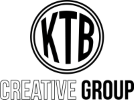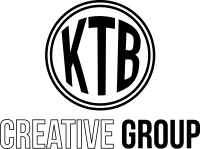Establishing thoughtful goals can be the easiest way to stay on top of the changing game of marketing. As audiences, technology, and expectations transform, so should your marketing strategy. But how do you know what goals are reasonable to strive towards? We’re glad you asked!
Know Where You Are
Take a good hard look at your current marketing strategy and determine where the weakest points lie. Where would you find the most return on value in addressing? Is your client list lacking? Did your social engagement plummet over the last year? Finding one or two key initiatives to focus on will ensure you don’t overextend your team, but are still making impactful change.
Understand Your Why
Before you start setting goals, you should take a moment to consider a couple of things:
- What is the force behind the “why” of what you are aiming to achieve?
- What would success look like to you?
- Do you have everything required to make that success a reality?
How to Set Realistic Marketing Goals
Once you’ve chosen the areas in which you’d like to address change, establish a plan to set you on the path to success.
- Goals should be specific without gray areas that could create confusion.
- Determine which metrics you want to improve on, what that improvement should look like, and what resources will be available in the pursuit of the goal. In order to measure the progress as you implement change, quantify your goals.
- Base your goals in your own analytics. Don’t choose a random number that sounds like a good place to be, instead see how the metric you’ve chosen to improve has changed without focused assistance in the past year, and set a reasonable expectation for growth based on your allotted resources.
- Ensure there are timelines attached to your goal. Better yet, set milestones between present day and your final date to check in on your progress and make tweaks as needed.
Examples of Marketing Goals
Improving Facebook Engagement
Cathy is a horse trainer who travels to facilities to give riding lessons and train horses. She has a social media presence that she posts on when she has spare time. She knows that the majority of her current clients found her through Facebook, but after looking at her account she realizes that her infrequent posting and low engagement are not helping to grow her business.
Cathy wants to increase her Facebook engagement to help build her community and find new clients. She decides a specific and reasonable goal is to strive for more engagement. She wants a measurable number, and settles on 20% more engagement based on her past growth. She knows that by seeing what posts have higher interaction that she has posted in the past couple of months, she can post similar content more frequently to reach this goal. She is giving herself the first quarter of the year to reach this goal, with milestones every month to see where she is at and what improvements could be made on her plan. Cathy’s plan is attainable, has set milestones and metrics, and will cause a significant impact to her business- E once it has been achieved.

Increasing Blog Subscribers
George is an Olympic showjumper who recently retired from riding due to injury. He is still passionate about the sport and has increased his clinic and lesson program to help up-and-coming athletes reach the top levels. He knows he has a lot of knowledge to share, and decides he wants to start a blog to share some of it. After a few months, he has several blog posts, but they don’t have many views.
He sets a goal for himself to increase blog subscribers. He looks at similar blogs that are doing well and determines the problem isn’t his content, it’s that he doesn’t distribute his blog in any capacity. George decides that he wants to see a 10% increase in subscribers each month for the first half of the year. He creates a plan to share blogs on social media every week at a set cadence as well as highlight them on his website. George has set a realistic, measurable goal and determined which resources he can use to reach it!




